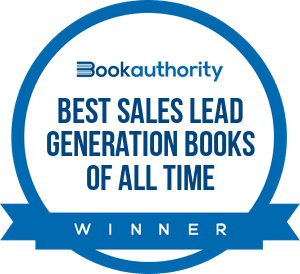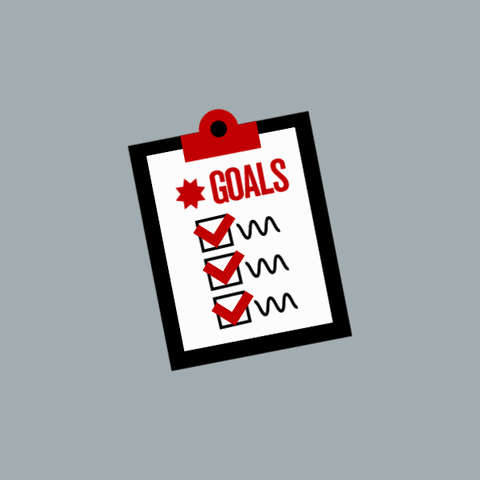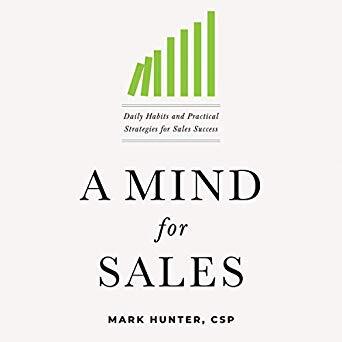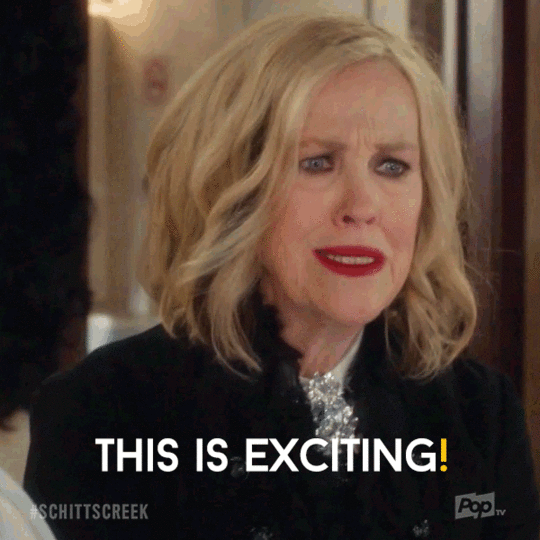Mark Hunter's Blog, page 21
February 16, 2022
5 Pricing Rules I Wish I’d Known Earlier
How can you maximize your revenue and avoid buckling under requests for a discount?
In addition to these five rules, I have a lot more to share with you about pricing that you’ll wish you’d known earlier. Don’t wait another day or make another mistake when presenting your price. Get my Pricing Masterclass today!
1. Lack of confidence leads to unnecessary discounting.More discounts are given based on the failure of the salesperson to believe in their own price than are given based on the demands of the customer.
Sure, a lot of customers demand price decreases. But more often the real reason they cave is the salesperson isn’t convinced themselves.
So what happens? They think the customer’s looking for a price discount, so they give a price discount. Or, when the customer goes silent, the salesperson thinks, “Oh it’s because my price is too high.” They cut the price. It’s too easy.
I challenge you to believe in your price. Believe in the outcomes that you can create for your customers.
When you present your price with this mindset, you won’t feel tempted to succumb to buyer’s tactics.
2. Never discount a price to get a deal.All you’re doing is giving away money.
Some people think, “Well if I just cut my price now, I’ll be able to make it up in the long run.” Unfortunately, this just isn’t true. The price cut you give them becomes the price perception and the price belief that the customer takes to the bank for the next one.
Just because you give them a price discount now doesn’t mean they’re going to pay full price next time. Worse yet, some salespeople will hear “Oh, well give me a price discount and I’ll bring you a lot of business later on.” It doesn’t always happen, in fact it rarely happens. They just got a lower price out of you, that’s all.
In addition, when you discount to get a deal, you attract customers who could never afford to buy from you at full price. Now you’ve got a real problem. You’ve given away your goods or services at a lower price, so you’ve attracted customers who can’t afford to buy from you at full price. If so, you’re in a real bad situation.

via GIPHY3. The most profitable sales can be the ones you don’t make.
You have to be prepared to walk away.
“Well, if I just cut the price a little more, and a little more, I’ll get the deal.”
However,if you cut the price so much that you don’t make any money off of it, you would’ve been better off walking away from it. This is especially true with bids and contracts.

via Amazon Prime Video on GIPHY4. Selling price is not what counts. It’s the profit you make that matters most.
For example, you may make a 20% margin on an item. We’ll say it sells for $100, so your cost of goods sold is $80 and you make $20. Then, your customer asks for a 5% discount. Perhaps you’re thinking to yourself as a salesperson, “That’s only $5 off of 100. That’s okay.”
No, it’s not a 5% discount. It’s a 25% discount, because you’re not changing your cost of goods sold. You’re only changing the profit that you’re going to make. And suddenly instead of making $20, you’re now making $15.
5. Low price is not a marketing strategy.It’s not the selling price, it’s the profit you make.
You sell a low price, the customers you attract will leave you when a lower price comes along.
Somebody somewhere, sometime, somehow will come up with a price lower than you, and your customer will leave you.

via Suits on GIPHY
 Customers cannot be expected to pay a premium price until they understand the value you bring.
Customers cannot be expected to pay a premium price until they understand the value you bring. There’s a lot to consider before you talk price, and I cover it all in my masterclass, Pricing: How to Avoid Discounting and Sell at Full Price.
I’ll cover ROI presentations, value propositions, as well as my rules for pricing, and how to respond to common pricing objections and issues. But that’s not all! See the full course contents here.
It’s our biggest masterclass yet, and still only $59–an incredible value for 12 instructional videos and accompanying workbook. Enroll now.
This week on The Sales Hunter Podcast:
 How much talking should you do on your discovery call versus your demo?
How much talking should you do on your discovery call versus your demo?Learn the answer and join us this Thursday as we welcome Lee Salz to The Sales Hunter Podcast.
In this episode, Lee and Mark discuss topics such as how to start with a solid foundation with your discovery call, and the important relationship between the discovery call and the demo.
You’ll find this episode live on Thursday morning, or you can find more episodes of The Sales Hunter Podcast here.
Copyright 2021, Mark Hunter “The Sales Hunter” Sales Motivation Blog. Mark Hunter is the author of A Mind for Sales and High-Profit Prospecting: Powerful Strategies to Find the Best Leads and Drive Breakthrough Sales Results.
FollowFollowFollowFollowFollowFollow
The post 5 Pricing Rules I Wish I’d Known Earlier first appeared on The Sales Hunter.
February 9, 2022
5 Solutions to Common Pricing Mistakes
Here are five mistakes that aren’t setting your up for success when you present your price–and what do to about it. It is possible to avoid discounting!
Today’s blog is brought to you by this month’s Pricing Masterclass. It’s our biggest course yet, because there is so much I want to share with you. Is today’s post helpful to you? Then I encourage you to buy this month’s course here.
1. Weak Value Proposition
This is by far one of the biggest problems salespeople have. Take the time to really listen to what the customer’s looking for, and in turn create a value proposition wrapped around the needs that the customer has. Salespeople who just listen to what the customer thinks they want–and that’s what they offer them–are making a big mistake.
The value proposition is where you set the price.
Never ever state the price until you first have really uncovered the need and exploited the need that they have. You expand the pain that they have. It might be a pain, it might be a gain, but you have to maximize that. You have to leverage that information before you can even begin to think about putting price on the table.

via Red Table Talk on GIPHY
2. Lack of Confidence
The salesperson:
Doesn’t believe in what they can provide the customer. Is not confident in having a conversation. Is totally wrapped up in the presentation, or maybe in a negative thought that they’ve got going through their mind. Or perhaps they’re thinking, “Wow, this is really expensive.”Remember the customer is not buying, the customer is investing.
When you spend enough time creating a value proposition, it’s going to help you in your confidence. Remember this, you can’t be afraid to walk away from a customer over price. As soon as you start thinking you have to close every deal because of price, you will discount every deal.
Read more about how your price reflects your confidence.

via GIPHY News on GIPHY
3. Rush to Price
The customer calls you up and says, “Hey, all I need is a price quote, just give me a price quote.” What do you do? You quickly rush to the price. Then they say, “Oh wow, that’s really expensive.” You see this plays again on weak value proposition and lack of confidence. You can never rush to the price.
The price is the last thing that comes out on the table. So when you have somebody call you up and lead with the price, don’t fall for that trap. Instead respond by saying, “Hey, you know what? I want to make sure that what I provide you is the right thing. So can you answer a couple questions for me?”
You have to have that conversation. You have to uncover the need before you quote the price.

via TV Land on GIPHY
4. False AssumptionsThere is so much we need to do before we ever discuss price. Find out what in this month’s masterclass: Pricing found at The Sales Hunter University.
This one traps so many salespeople, it’s unbelievable. Here’s what happens, “Well, this is how another customer responded. So that is how this customer’s going to respond.” That’s like trying to drive a car forward by only looking in the rear view mirror. It doesn’t work.
False assumptions trap salespeople into false beliefs. You may believe it, but it doesn’t mean the customer believes it. You may perceive it, but it doesn’t mean the customer perceives it. It’s only when the customer says it that you can begin to believe it.
I want you to slow down, so you can speed up to close. You slow down by being willing to spend time on that value proposition, and that process begins with listening to the prospect.

via Saturday Night Live on GIPHY
5. Weak pipeline
It’s the only deal I’ve got. I’ve got to close this or I’m going to starve to death. I’ve got to close this deal, or I’m going to lose my job. I’ve got to close this or…
A weak pipeline causes you to create false assumptions. It causes you to rush to price. It leads you to have a lack of confidence and put out a weak value proposition. You see? Your weak pipeline is really the root of every problem. Because when you have an abundant level of customers, or an abundant level of opportunities, it’s amazing how much more confident you are with your price.
I want you to ask yourself this question: “Is the reason I don’t have enough customers in my pipeline because I’m not spending enough time prospecting?” That’s really what it comes down to. A confident price, the lack of discounting, all begins because you’re spending enough time prospecting.
It is my privilege to help you sell and close more deals at full price.

I want to help you build confidence in your price, and have the strategies to present your price (or price increase) and actually get it. Buyers are (almost) always going to push back on price, but how we present ourselves, our value, and our outcomes can totally change the game.
That’s why this month’s masterclass from The Sales Hunter University is all about Pricing. It’s our biggest masterclass yet! It’s LIVE now at TSHU. You won’t want to miss it.
 Coming soon to your earbuds: The Sales Hunter Podcast.
Coming soon to your earbuds: The Sales Hunter Podcast. I’m very excited to host this new platform to help more salespeople turn prospects into profits. I’ve invited my friends, my peers, and leaders in the sales community to come on and share their wisdom and ideas to help you. Or in special sessions, I’ll share my own expertise as we consider what new strategies can make you more successful in sales today.
Join me as The Sales Hunter Podcast goes LIVE tomorrow, February 10th.
Listen wherever you stream podcasts.
Copyright 2021, Mark Hunter “The Sales Hunter” Sales Motivation Blog. Mark Hunter is the author of A Mind for Sales and High-Profit Prospecting: Powerful Strategies to Find the Best Leads and Drive Breakthrough Sales Results.
FollowFollowFollowFollowFollowFollow
The post 5 Solutions to Common Pricing Mistakes first appeared on The Sales Hunter.
February 2, 2022
Your Price Reflects Your Confidence
As much as everyone in sales would like to consider themselves “great closers,” in reality, many are weak when it comes to this important skill. They boast about never discounting their product, but when confronted on price, they fold faster than a cheap umbrella on a windy day.

via Tennis Channel on GIPHYConsider the following scenario you may have found yourself in:
You’re on the verge of closing a big deal. Doing so will put a nice, fat commission check in your hands and you’ll soon be receiving kudos from everyone in the company. Now comes the curve ball. You discover that the customer is looking to you for a price discount because they found another supplier willing to undercut your price.
Read more about Ways to Overcome Price Objections in a Pandemic.
While you are under pressure to get the sale, you are left with only two options. You can hold the line and not cut the price to keep your profit potential intact. Or, you can cut the price and be willing to take a lower margin for the sake of getting the order. Which do you choose?
Price Is a Reflection of the Salesperson’s Confidence
Although the tendency for many is to give a lower price, there is a better approach. By being prepared ahead of time, you can avoid caving in under the pressure of the moment. How do you prepare? Know why you can fill their need
In a situation like this, your self-assurance is critical. You need to have clarity of value. What do you bring to the table?

via ABC Network on GIPHY
Be confident in what you say. More importantly, ensure that the customer is certain of the benefits they will receive by working with you. People will pay more for what helps them with their problems, and that brings them value. The cheapest price might be what everybody is looking for, but what good is a low price if it doesn’t deliver?
How to Respond to Price Objections
When the customer requests a discount, respond by asking them about what they expect to gain from buying your product/service. Your goal should be to get them to express the pain they will experience if it doesn’t help them accomplish what they want. Then, guess who can alleviate that pain and best fill that need? It’s you!
Focus on the outcomes you can deliver to the customer.
The worst thing any salesperson can do when a customer is looking for a price break is to give in. Unfortunately, because many cannot confidently communicate their price, they often cave. To overcome this problem, salespeople need to understand, in real terms, the buyer’s perspective of how they can benefit from the product/service.
Remember, we understand by listening.

via National Geographic Channel on GIPHYCheaper Is Not Always Better
For example, if I’m going to take a trip and my destination is 1,000 miles away, I have several options as to how I can get there. I could hitchhike, which would cost me virtually nothing, but wouldn’t guarantee when I’d arrive. I could drive my car, keeping my immediate costs to only the gasoline (assuming the car does not break down), but my travel time could take several days. Or, I could fly, which would cost the most, but would, undoubtedly, be the fastest.
Yyour goal in selling should be to help ensure the success of your customers. So you can see from this example that the cheapest approach is not reliable, nor would it save time. In addition, most people wouldn’t want to take several days to drive to and from the destination. Therefore, because of the time it will save, the best option is to fly.

via Picture Press Play on GIPHY
Discounting Now Will Always Come Back to Bite YouSince time is of the essence with many customers, its value is worth the extra money. Keep that in mind, as cutting the price is clearly not the most beneficial or efficient.
Another common reason salespeople give in when challenged is because they believe the lie that by offering a discount on the initial order, they can make it up on the next one. However, the truth is that there is no way to ever regain the lost revenue. Once the customer has accepted a lower price, that amount becomes their expectation. Any other price is seen as an increase.
Read more about Why Price Cutting Isn’t a Viable Prospecting Strategy.
Maintaining pricing integrity is a challenge. It starts by being self-assured, and it extends not only to the service you deliver, but also to the expectations of the customer.
Don’t entertain their requests for a discount. Be confident in both your price and the product/service you offer. Ensure that your sales pipeline is full by spending adequate time developing it at all phases of your sales process. Consider how your product/service can help ensure the future success of your customers. Without confidence, you can say good-bye to your profits.
 Coming soon to The Sales Hunter University‘s amazing Masterclass course list…..Pricing.
Coming soon to The Sales Hunter University‘s amazing Masterclass course list…..Pricing.Stay tuned for when this course goes LIVE later this month.
Of course, if you become a Level 3 Member of The Sales Hunter University, you get this month’s offering, and every other masterclass as well! Join today and receive live coaching, as well as office hours with me. It’s never to late to invest in yourself, and in your success. Find out more here.
Copyright 2021, Mark Hunter “The Sales Hunter” Sales Motivation Blog. Mark Hunter is the author of A Mind for Sales and High-Profit Prospecting: Powerful Strategies to Find the Best Leads and Drive Breakthrough Sales Results.
FollowFollowFollowFollowFollowFollow
The post Your Price Reflects Your Confidence first appeared on The Sales Hunter.
January 26, 2022
7 Prospecting Myths Debunked
Sure, I love using email. It’s a great tool. But you can’t rely on email. You must be on the phone making it happen.
I hear a lot of prospecting myths in my line of work. They drive me crazy! It’s time to set the record straight.
Today’s blog is brought to you by my Prospecting Masterclass. This sneak peek focuses on just one section of the course. Want more? Find this fan favorite at The Sales Hunter University here.
Myth #1: After one phone call (or email), I’ve decided this isn’t going anywhere.
Remember, unless you’re selling pencils, you’re not going to close the sale on the first contact. Much of prospecting is rinse and repeat. With each phone call or email exchange, try to gather a little more information.
Lead the prospect to share their needs, then use those needs to create interest in your next meeting.

via Law & Order on GIPHYMyth #2: I’m just interrupting them.
Don’t worry about interrupting them! I get it, they weren’t expecting your call.
Remember, sales is about helping people. And if you know you can create a solution for them, it’s your obligation to continue to reach out.
All you’re trying to do is get to the next step.
Myth #3: I need to start the call asking them about their weekend, or how they’re doing.This is absolutely false and doesn’t feel genuine over the phone or over email.
The prospect knows you don’t really care how they’re doing, or how their day is going. So save your breath and craft a more engaging introduction to the call.
Myth #4: I have zero expectations going into this call.Try asking them a question, or asking them for their opinion about something instead.
Before ever calling, your thoughts can never be, “I don’t think this call is going to be successful.”
Your attitude going into the call is going to determine the outcome of the call.
Do your research and prepare a few great questions for the prospect. Feeling more prepared can give you confidence going into any meeting or exchange of messages.

via TV Land on GIPHYMyth #5: Why call? There’s no business there.
The biggest myth is believing that it’s not worth it to make this call because there’s no business there.
When you go into the call with the right attitude, it’s amazing how things will happen. Will you hit a home run every time? No, but that’s okay. Things do happen when you change your mindset, and don’t fall for this myth.

via The Weather Channel on GIPHYMyth #6: If all I get on my call is one piece of information, then it’s a failure.
Your first goal is simply to earn the right, the privilege, the honor, and respect to talk with them again. That’s it. You just need to be able to talk to them again!
Then, if I can learn one piece of information from them, I can use that in my follow up.
If all I have are these two things, I consider that call a success. My goal is just to get my prospect to the next step.
Read more about How to Follow Up with a Prospect.
Myth #7: “ Why don’t you send me some information,” is a call killer.Is this a blow-off signal? Yes, of course, you know that.
How do I respond? Well, it’s time to verify. I want to say, “You know, there are a lot of things I could send you. I want to make sure I send you the right information. Let me ask you two quick questions.”
Generally, most people will say, “Okay.” Now you better have two great questions prepared!

Enroll in the Prospecting Masterclass and receive a wealth of information, strategies and tips to strengthen those sales skills. This course dives into topics such as:
who to prospectdeveloping message pointsyour cadence and time managementhow to get prospects to respond…and much more.Get the full masterclass here.
Want this masterclass, but also interested in other focused courses such as Email Prospecting, Phone Prospecting, and Following Up with Prospects? I suggest looking into Level 3 membership at The Sales Hunter University. All-access members receive all my masterclasses free! Plus each new masterclass I put out each month.
What’s more, I get to know my level 3 members more personally through coaching, and monthly office hours. Do you have big goals for this year? Become a member today.

Copyright 2021, Mark Hunter “The Sales Hunter” Sales Motivation Blog. Mark Hunter is the author of A Mind for Sales and High-Profit Prospecting: Powerful Strategies to Find the Best Leads and Drive Breakthrough Sales Results.
FollowFollowFollowFollowFollowFollow
The post 7 Prospecting Myths Debunked first appeared on The Sales Hunter.
January 19, 2022
The 6 Best Times to Call Prospects
Are they driven by certain things that happen in their calendar? Or in their industry?
This blog is brought to you by my Phone Prospecting Masterclass, available at The Sales Hunter University. This course breaks down each element of phone prospecting in great detail, and finishes with some useful scripts. Today I’m sharing an exclusive sneak peek of the course with my blog readers, but you can find the full course here.
Here are my tried and true best times to call a prospect. Not practicing these six tips? I challenge you to try a few this week.
1. NowThe best time to call is right now. Too many salespeople will procrastinate. They put it off, but they’re just hurting themselves.
Don’t allow different excuses to come up.

via The Sales Hunter on GIPHY2. During a dedicated prospecting time
Create a power hour, a calling block, a dedicated time to prospect every day, or at least multiple times a week. The most successful people with phone prospecting are those that have a dedicated time. It’s like going to the gym, it has to become a routine.
3. Friday afternoonsYou build those phone prospecting muscles through repetition and consistency.
Are there certain days of the week that work better for your industry? Don’t rely on your own opinions. Base your answer on fact.
Friday afternoons are one of the best times to prospect. Friday afternoons is when I get more conversations than any other time of the week, because people are more laid back, and more relaxed. Especially Friday afternoons in the summer! What? Yes!!
Read more about Phone Prospecting Shortcuts
4. Monday morningsOf course, there are some industries in which Monday morning is the best time to call, because buyers are in a panic and they need help–boom, you can call and offer a solution. I can think of other industries this applies to, such as labor or construction in which Monday morning they’re already realizing some big needs.
There are so many other industries that this tip applies to. The only way for you to find out if Monday mornings or Friday afternoons work for your industry is by actually doing it. That doesn’t mean making 5-6 calls and drawing a conclusion. You need at least 100-200 calls made over several weeks on a Monday morning or Friday afternoon before you can make a determination.

via Leroy Patterson on GIPHY5. Early or late
I can think of many organizations and salespeople who have tremendous success calling after 4:30 or 5:00 p.m., or before 8:00 a.m. If you’re dealing with a lot of gatekeepers, early and late can be the best time of the day!
Look at your historical records–when were the times that you were able to get through? (Of course, not every call you make will be after 4:30 p.m.) Instead, create some challenges for yourself. Twice a week, try five calls after 5:00 p.m. Next try eight calls before 8:00 a.m.
6. HolidaysWhat are the best prospecting weeks of the year? Thanksgiving week, and the last two weeks of the year. Why? So many people are on vacation. Normal schedules are disrupted. Meetings that normally happen just don’t occur, and people are in a much more laid back mode. Holidays are a great time because gatekeepers are gone. For these same reasons, the same applies in summer, too.
Of course, you’re going to find a lot of people are in fact on vacation. So this is the one time frame I don’t recommend leaving a voicemail.
Your selling process is indicative of the service that you will provide for them when they decide to do business with you. Reaching out to them during the last two weeks of the year shows commitment.
For example, I was running an industrial supply company some years ago. We made it a focus to make prospecting calls the last two weeks of the year, and we picked up a great amount of business because our competitors were closed, and our prospects needed business fast. We were able to help them, and that business stayed with us for the year to come!
Like the sneak peek? Get my best-selling Masterclass today.
The phone is still the best prospecting tool. However, certain practices can render it useless. I want to help you make calls that are meaningful, productive, and profitable.

Enroll in my Phone Prospecting masterclass today to find out what I teach about frequency of calls, how to deal with gatekeepers and roadblocks, overcoming objections, voicemail, integrating the phone with email and social media, and much more. Get started now.
You can get it for just $59! Or, upgrade to being a member of The Sales Hunter University. There are three memberships to choose from, but only Level 3 gives you all-access to all my masterclasses. That means not just Phone Prospecting, but also Email Prospecting, Follow-up, Ideal Customer Profiles, and much more! Become a member today.
High-Profit Prospecting made it to the Best Sales Lead Generation Books of All Time
I’m happy to announce that my book, High-Profit Prospecting: Powerful Strategies to Find the Best Leads and Drive Breakthrough Sales Results, made it to BookAuthority’s Best Sales Lead Generation Books of All Time:
BookAuthority collects and ranks the best books in the world, and it is a great honor to get this kind of recognition. Thank you for all your support!
The book is available for purchase on Amazon.
Copyright 2021, Mark Hunter “The Sales Hunter” Sales Motivation Blog. Mark Hunter is the author of A Mind for Sales and High-Profit Prospecting: Powerful Strategies to Find the Best Leads and Drive Breakthrough Sales Results.
FollowFollowFollowFollowFollowFollow
The post The 6 Best Times to Call Prospects first appeared on The Sales Hunter.
January 12, 2022
How to Write the Perfect Prospecting Email
If you’re reading this blog, I’d bet you’ve sent a prospecting email, or two. In fact, you may think you write a compelling message. But where are the results? Could there be a few email prospecting pitfalls you’ve had?
Today’s post is brought to you by my Email Prospecting Masterclass. This sneak peek comes directly from the course. It’s a fan favorite, and if you haven’t enrolled yet, you’ve got to take advantage of the wealth of knowledge it has to offer. Learn how to enroll here.
So, how do you write the perfect prospecting email? Here are seven tips to supercharge your emails for maximum impact. 1. Check your subject.
It’s got to be compelling. This is one of the first things to draw them in. If your subject says things like “Just checking in…” they’ll more than likely delete it before reading. Subjects like that scream, “I’m a salesperson!” and your email will be overlooked.
2. Send it to yourself.This is a great strategy to see exactly how the prospect will see your email. I suggest following the ‘one swipe rule’. The best prospecting emails are 4-6 sentences. Anything longer than that and the prospect will lose interest.

via The Tonight Show Starring Jimmy Fallon on GIPHY3. Don’t waste the first sentence.
The first sentence is not the place to introduce yourself. Remember, this sentence, or at least the beginning of it, will also show up in their email along with the subject line. This is another chance to draw them in. Introducing yourself is not enticing whatsoever, it says, “this person doesn’t know me.”
Instead, try sentences which talk about: “New changes regarding this,” “An update on this,” or “What’s your opinion on this?” Anything that can peak their interest.
4. Keep your introduction short.You don’t need to go into specific titles. Your name and your company is fine. This is not the place for a long, drawn out explanation of who you are. The details of your work responsibilities are not important here. Instead, keep it simple, and move on.
5. Confirm your expertise.
Here you’re answering why they should work with you.
“I’ve worked with other companies like yours.”
“We’ve seen this situation before.”
“We’ve been able to help other people through this, and I can share some information with you.”
This section of the email is key if they don’t know you, your service/product, or your company. This is something you should know ahead of time before writing any email campaign. You’ve got to know if you’re educating or converting the prospect.
6. Don’t give them an out.Want to learn more about educating or converting? I talk a lot more about this topic in my Email Prospecting Masterclass . Enroll here to up your email game today.
Never say you’ll follow up with them. If there were any glimmer of hope that they were going to call you back, you just lost it. You gave them an out.
Even if you’re going to call them, don’t tell them you’re going to call them. The Call to Action must lead them to want to communicate with you first.
Because if you call me, I know that you’re more engaged, and that it’s a convenient time for you.

via The Good Place on GIPHY7. Consider whether to include your website, or company logo.
If your company is well respected and well known, go ahead, put your company logo in.
However, if you put your website in, will they potentially disqualify you because of it? What I mean is, don’t give them too much information where they can make a decision without you. Take a moment to analyze that risk before moving forward.
 There’s so much more to see and learn in the Email Prospecting Masterclass, including:
There’s so much more to see and learn in the Email Prospecting Masterclass, including:ground ruleswhen to emailhow to locate emailsmonitoring the results of your emails
I’ve included some sample emails at the end of the masterclass workbook, too.
I’ve had the opportunity to help sales teams around the world improve their emails, and see results. I want to help you too. You can get that same training for $59, all from the comfort of your home office! Get the masterclass now.
Copyright 2021, Mark Hunter “The Sales Hunter” Sales Motivation Blog. Mark Hunter is the author of A Mind for Sales and High-Profit Prospecting: Powerful Strategies to Find the Best Leads and Drive Breakthrough Sales Results.
FollowFollowFollowFollowFollowFollow
The post How to Write the Perfect Prospecting Email first appeared on The Sales Hunter.
January 5, 2022
5 Choices for a Successful 2022
I choose to look at 2022 as the year of unlimited opportunity, and I see that not only for myself, but for you too. Regardless of where we’re at today, it’s how we choose to use our time moving forward that matters.
It’s time to make some decisions. What choices can I make for this to be the best year ever?
1. Saying “No”
I can’t do everything. “No” is going to play a much bigger role in my life this year. Some of the most important things this year will be those I choose not to do. I’m saying “no” to many more things than ever, and it feels good. By saying “no” to things, I’m able to open up time to say “yes” to the more important things.
That way, I can focus on being productive, not busy.
What am I saying “no” to? I must accept the fact that completing a task to 95% is sometimes good enough, because the time spent to get things to perfection and 100% is simply not worth it. I’m saying “no” to the shiny objects and the feel good ideas that either pop into my head, or people throw in front of me. “No,” is all about giving me more time.

via Friends on GIPHY
2. Having a short list of goals
Gone is the era of having a dozen goals that only serve to stress me out. Consequently, this causes me to not accomplish any of them well at all! In their place are three goals, and that’s it.
Three goals I review each day; three goals I assess at the end of each week to ensure I’ve made significant progress on. My short list of goals consume my mind to keep me focused so I don’t get caught up doing things I shouldn’t be doing.
Read more about Why Setting and Achieving Goals Is Hard.

via NAB on GIPHY
3. Following the 8 AM rule
I talk about the 10 a.m. rule, and the need to accomplish something significant each morning before 10 a.m. I’m putting it on steroids and I’m upgrading to the 8 a.m. rule.
Each morning I intend to accomplish something significant before 8 a.m. and this will in turn motivate me to make the rest of the day even more productive.
 4. Prioritizing time with myself
4. Prioritizing time with myselfThe most important meetings of the day are the meetings I have with myself. No, I’m not being arrogant, I’m being real and accepting the fact that I need time each day to think. Thinking allows me to stay focused and productive. If I can’t have time alone with myself each day, then something is wrong.
The most powerful tool I have is not my computer, or the systems I access each day, it’s my mind. I intend to give it time each day to do what it does best.

via Identity on GIPHY5. Being choosy
I will not allow my time to be consumed by people who do not leave me in a positive state. I’m a strong believer in surrounding myself with people who will challenge my thinking, hold me accountable, share ideas, and help me grow.
One of the ways I do this is with my mastermind group–I interact with them almost every day. For me, my mastermind group is my secret weapon in helping me grow. I’ve been part of one for years and I can’t say enough about the benefits.
If you’re not part of a mastermind group, let’s talk. I’m setting up a new mastermind right now and am inviting in a select group of people. If you’re interested, reach out to my email: mark@thesaleshunter.com I’m only going to allow in a finite number and it’s important to also get the right mix of people.

If you’re looking for a mindset reset this year, I invite you to read my newest book, A Mind for Sales.
It doesn’t matter if you ended last year totally bummed or on cloud nine. This book will guide you toward sales success starting with your mind and your daily habits.
Find it here.
If you do these five things listed above you will set yourself up for an amazing 2022. Regardless of how things went for you last year, we can’t forget the scoreboard for 2022 reads “zero.” We’re starting over.
Copyright 2021, Mark Hunter “The Sales Hunter” Sales Motivation Blog. Mark Hunter is the author of A Mind for Sales and High-Profit Prospecting: Powerful Strategies to Find the Best Leads and Drive Breakthrough Sales Results.
FollowFollowFollowFollowFollowFollow
The post 5 Choices for a Successful 2022 first appeared on The Sales Hunter.
December 29, 2021
The Best of 2021
To my loyal readers, thank you for joining me this year as we sought to better ourselves, increase our sales, and excel in our industries.
A very Happy New Year to all. Let’s take a look back and remember some of the Best Blogs of 2021.
Which do you remember? Which one is a great refresher? Let me know in the comments.
1. Prospecting and Avoiding the Cold Call
“No one on either end of the phone line enjoys a cold call. Put yourself in the prospect’s shoes. Under what circumstances would you want to listen and engage with someone about a product or a service?”
2. 10 Tips to Get More ReferralsRead more here.
“Without a doubt, the easiest, most efficient and cost-effective way to build your business is with referrals.”
“Asking for a referral is not hard, and once you do it a few times the process will become second nature to you.”
3. How to Know if a Lead Qualifies as a ProspectRead more here.
“Your time is valuable. Your skills are valuable, too. So before you get too cozy with any lead in your pipeline, it’s worthwhile to take a moment to evaluate. Is this a prospect I can move forward with, or just a suspect? “
4. Prospecting Using the PhoneRead more here.
“You can’t be good at something you never practice. One of the biggest differences I find between those who have success with the phone and those who don’t is they simply aren’t using it. The telephone is like a muscle, and you’ve got to use it enough to strengthen it and get into a repetition.”
Read more here.

via GIPHY 5. How to Get Out of a Sales Slump
“Don’t kid yourself – even top performers have sales slumps. The key is how quickly can you get out of the sales slump?“
6. How to Be a RainmakerRead more here.
“Rainmakers make it happen 365 days a year, regardless of what is happening around them.”
“Rainmakers are never content with the business they get from a customer. They always believe there is more business to be had from every customer.”
7. ABC: Always Be Closing is Now ABV: Always Bring ValueRead more here.
“You create value by actually understanding what the customer is looking for. You understand what the customer is looking for not by telling them, but by asking them questions.”
8. What Does it Take to Have a Mind for Sales?Read more here.
“Seeing sales as a lifestyle means that it is not a job and it is not something you tune in and tune out of. Sales is something you do all the time.“
Read more here.

via The Sales Hunter on GIPHY 9. 10-Step Checklist for Prospecting Emails
“Remember, if you read an email on a smart device, you’re only seeing a part of it. So, if that subject line or that first sentence doesn’t pull you in, they’re not going to read further. They’re going to delete it.”
10. How to Re-Engage the Customer Who Has Gone DarkRead more here.
“Customers are really only going to deal with their top one or two priorities, so you have to create a sense of immediacy.”
“I love calling people who have gone silent and asking for their opinion. If I ask for their opinion on an issue that I know is of importance to them, it is amazing how frequently I get a response back.”
Read more here.

At The Sales Hunter we continue to produce top notch content that we know can help you.
Join us next year for more learning and hot topics. Remember to check out The Sales Hunter University to take your skills to the next level. Choose from Levels 1, 2, or 3 and join our learning community.

Colder weather makes for a great time to stay inside and read a good book. I wrote A Mind for Sales for salespeople who need a refreshed approach to the business. I share my own strategies and daily habits that I know can bring you success.
Check it out here and get your own copy now!
Copyright 2021, Mark Hunter “The Sales Hunter” Sales Motivation Blog. Mark Hunter is the author of A Mind for Sales and High-Profit Prospecting: Powerful Strategies to Find the Best Leads and Drive Breakthrough Sales Results.
FollowFollowFollowFollowFollowFollow
The post The Best of 2021 first appeared on The Sales Hunter.
December 22, 2021
3 Secrets to Accomplish Your Annual Plan
What can I do on a regular basis to move myself forward?
The following three habits are going to apply to anybody and everybody. Let’s delve into how to execute your plan in a way that you can increase your chances of success.
This month’s masterclass will guide you through the creation of your best annual plan. Enroll now and get my Goal Setting masterclass–free!
1. Review your goals.Too many people build their annual plan and put it in a drawer and never look at it again. I want you to be reviewing your goals not just on a monthly basis, or a weekly basis, but on a daily basis.
You can’t put them in a drawer, in a folder, or out on the cloud and forget about them.

via The Sales Hunter on GIPHY
If you’ve been around me a long time, you know that I talk about simplification of your goals. I have four goals, that’s it. Two primary goals and two secondary goals. And the secondary goals actually support the primary goals.
You have to ask yourself at the beginning of the day:Now, I have a lot of other things I’m working on, but these are the goals. I look at these two goals every day. Over time, the more I focus on the goals, the more success I have.
“What am I gonna do today to move myself forward?
Is my day set up to help move me closer to achieving these two goals?”
“Did I do what I said I was gonna do to help myself?”
These evaluations at the beginning and end of the day help me stay laser focused on a daily basis.
2. Have a mastermind group.
You’ve heard the phrase, “You become the sum of the five people you associate with the most.” I didn’t come up with that line, Jim Rohn did. You have to be part of a dedicated, motivating group of people because you’re challenging them on their goals and they’re challenging you. Now, when I say challenging, you’re helping each other.
I’m part of a mastermind group, we meet regularly, and we text daily, helping each other, and working with each other. We know what each other’s goals are, and as a result, we lift each other up. We are stronger together.

via GIPHY Studios Originals on GIPHY
3. Continuous learning.
Any successful person is a continuous learner.
I don’t care who it is. It could be Elon Musk, Jeffrey Bezos, Bill Gates, it could be anybody. They are continuously learning. Why are we not following suit?
You need to be in a framework.
Start putting this habit into practice by joining The Sales Hunter University. Level 3 members enjoy unlimited on-demand access to endless sales training courses on topics driven salespeople want to learn about. Each course has easily applicable knowledge that will sharpen your sales skills and set you apart.
I’m not some “far-off professor” though, Level 3 also gives perks like one-on-one time with me, as well as monthly online coaching. Look into the variety of learning opportunities TSHU has to offer and choose the membership level that’s the best fit for you.
See more blog content and Read More about the key elements of a strong annual plan.
Do these three things, and you’re going to be more disciplined as an individual. I firmly believe that the reason annual plans are achieved, or not achieved, really comes down to the level of discipline and focus that we have. Right now is the time when you have the ability to impact the year more than ever.
Right now is the time when you have the ability to impact the year more than ever.
It’s time to jumpstart your goals and motivation for 2022. Enroll in this month’s Annual Planning Masterclass for maximum impact.
It’s not just about crossing your t’s and dotting all your i’s. This takes critical thought, and evaluation that I will guide you through. Want next year to be different? This is your first step.
Enroll now and get two Masterclasses for the price of one– Annual Planning and Goal Setting. Start off the year with some key learning that will propel you forward to next December and beyond.
Let’s add goal writing and annual planning to your salesperson toolbelt. Equip yourself to achieve more in 2022.
Copyright 2021, Mark Hunter “The Sales Hunter” Sales Motivation Blog. Mark Hunter is the author of A Mind for Sales and High-Profit Prospecting: Powerful Strategies to Find the Best Leads and Drive Breakthrough Sales Results.
FollowFollowFollowFollowFollowFollow
The post 3 Secrets to Accomplish Your Annual Plan first appeared on The Sales Hunter.
December 15, 2021
What Every Annual Plan Needs
So what are the elements to consider when you draw up next year’s plan? Here are 8 things every annual plan needs.
I share even more in this month’s masterclass. Click here to learn more and get started making your most powerful plan yet.
1. Resources
What are the resources that you need to help you build your plan? These might be referral partners, channel partners, or a network. It might be subject matter experts. Take some time to brainstorm. What do you need to help you?
Once I’ve established what I need, how are you going to get it? It’s time to get specific.
What’s the time frame? Because maybe I identified subject matter experts as a required resource, but this person, or this slot in the company’s not going to be hired until the third quarter. So, how am I going to get by without this subject matter expert? Perhaps I’ve got to go out and create a referral network, or create a mastermind group.
Determining resources then requires action to acquire them.
Read more about 9 things your should consider before making your annual plan.
2. Major existing customers
With regards to your major existing customers, what are their major opportunities and their potential risks? Because this is the foundation of the business I’m working on.
This will also help me identify my next point: prospects.

via Paramount+ on GIPHY3. Identify prospects
Now, I may have prospects I’ve already identified, but where am I going to find the other ones? I’ve got to figure out where I can go to create more and get more prospects.
4. Selling strategy
Are there elements that I need to change in my selling strategy?
Are there new tools I need to bring into play?
Is there a different way that I may need to do the online demo?
Is there a different way that I need to offer up these infographics, or this material?
Are there different questions I should be asking?

via The Sales Hunter on GIPHY5. Prospecting Strategy
I break selling strategy apart from prospecting, because you have to have a focus on both. Those who only focus on the selling strategy, as a result, don’t prospect. Or conversely, they have a prospecting strategy, they fill the top of the funnel, but they can’t pull it through. It’s wise to evaluate both strategies.
6. New opportunities
Where are new opportunities? They could be in a variety of different places. From new industries to new geography, or even an existing customer who’s got five other divisions that I haven’t talked to. I want to identify them.

via Schitt’s Creek on GIPHY7. Value proposition
Do I really know what my value proposition is, and do my customers view it the same way? I challenge salespeople all the time on this, and it’s amazing how many times they can’t articulate it clearly.

via The Sales Hunter on GIPHY
8. Point of differenceIf you can’t explain your value proposition in 15 seconds or less, you don’t know what it is, and there’s no way a customer’s going to understand it either.
What’s the point of difference between you and the competition?
Start by determining: are you educating or are you converting? For converting, I’ve got a better widget than these other people do. If I need to get you into a new way of doing business, or a new way of doing something, I’m educating.
Knowing the difference and acting on it will help set you apart from your competition.
 I have one goal. I want you to have the most successful year possible.
I have one goal. I want you to have the most successful year possible.
But here’s the deal, you’ve got to take the time to build out your plan. I share a lot more guidance and know-how in this month’s masterclass: Annual Planning: Sales Success in 2022.
This course provides the structure you need to cover each element a great annual plan needs. The questions I ask you in this course you won’t hear from your manager, or colleagues. The work you do in the masterclass will set you apart from your peers–and the competition.
AND I’ve bundled this Masterclass with my Goal Setting Masterclass–you get both for $59!
Let me help you be one step ahead next year. Check out the full course contents of Annual Planning here.
Copyright 2021, Mark Hunter “The Sales Hunter” Sales Motivation Blog. Mark Hunter is the author of A Mind for Sales and High-Profit Prospecting: Powerful Strategies to Find the Best Leads and Drive Breakthrough Sales Results.
FollowFollowFollowFollowFollowFollow
The post What Every Annual Plan Needs first appeared on The Sales Hunter.
Mark Hunter's Blog
- Mark Hunter's profile
- 25 followers



